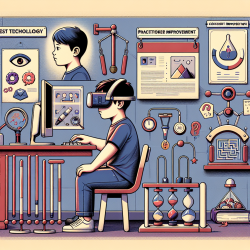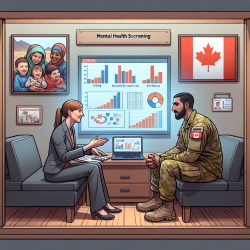Unlocking the Potential of Preschool Speech Therapy: A Data-Driven Approach
As a speech-language pathologist, you are dedicated to enhancing the communication skills of preschool children with developmental speech and language disorders (DS&LD). The recent study titled ‘It depends’: Characterizing speech and language therapy for preschool children with developmental speech and language disorders offers a comprehensive framework that can help you refine your practice. By leveraging this research, you can bridge the gap between evidence-based practice and real-world application, ultimately improving outcomes for your young clients.
The Framework: A Closer Look
The study outlines a high-level framework that categorizes therapy aims into three core areas:
- Addressing the Child's Areas of Impairment and Skills: This includes focusing on foundation skills, comprehension, expressive language, and speech. By honing in on these areas, therapists can tailor interventions to meet the specific needs of each child.
- Achieving Functionally Meaningful Skills and Carryover: This involves helping children generalize their skills to everyday situations, enhancing their ability to communicate effectively in various contexts.
- Supporting Adults to Provide a Supportive Communication Environment: Engaging parents and caregivers is crucial. Educating them about their role in supporting the child's communication development can lead to more consistent and effective interventions.
Practical Applications for Speech-Language Pathologists
Implementing the framework involves a personalized approach to therapy. Here are some actionable strategies to consider:
- Individualized Assessment: Use comprehensive assessments to identify each child's unique strengths and areas for improvement. This will guide your intervention planning and ensure that therapy is tailored to their specific needs.
- Engage Caregivers: Educate and empower parents and caregivers to create a supportive communication environment at home. Provide them with practical strategies and tools to reinforce therapy goals.
- Focus on Functional Communication: Prioritize interventions that enhance the child's ability to communicate effectively in real-life situations. This includes teaching alternative communication methods, such as sign language or picture symbols, when necessary.
Encouraging Further Research
While the framework provides a solid foundation, there is always room for further exploration. Consider conducting your own research or collaborating with colleagues to investigate areas that are less studied, such as adult understanding and empowerment. By contributing to the body of evidence, you can help advance the field and improve therapy outcomes for preschool children with DS&LD.
To read the original research paper, please follow this link: ‘It depends’: Characterizing speech and language therapy for preschool children with developmental speech and language disorders.










